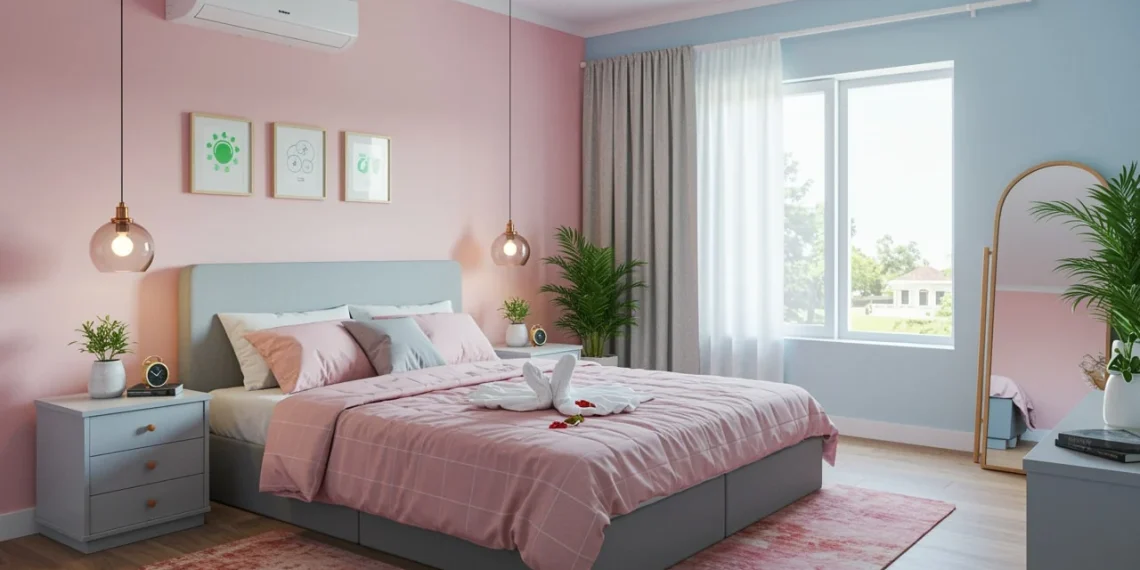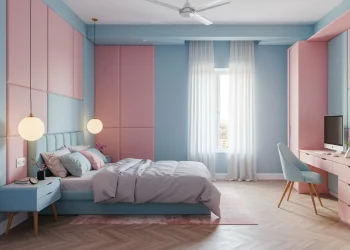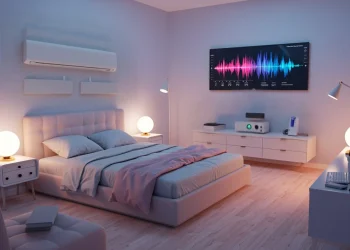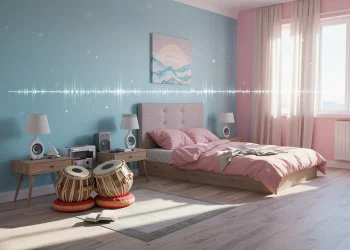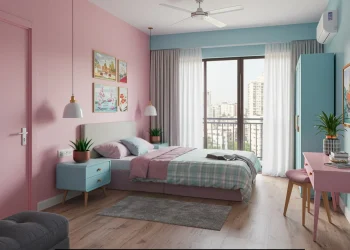As temperatures soar across India during the scorching summer months, millions of households face a common dilemma: how to achieve comfortable sleep without watching electricity bills spiral out of control. The relationship between quality sleep and ambient temperature becomes particularly crucial when mercury levels consistently cross 40°C, making air conditioning not just a luxury but a necessity for restorative rest.
Understanding the optimal balance between comfort and cost can transform your summer nights from restless, sweaty ordeals into refreshing, energy-efficient sleep experiences. With the right AC sleep mode India strategies and proper temperature management, you can create the perfect sleep environment while keeping your energy consumption—and costs—under control.
Optimal AC Settings for Indian Summer Temperatures
The science of sleep comfort reveals that our bodies naturally cool down as we prepare for rest, making temperature regulation crucial for quality sleep. During Indian summers, when ambient temperatures often remain above 30°C even at night, strategic AC management becomes essential for both comfort and economy.
The Golden Temperature Range
Research consistently shows that the optimal bedroom temperature for quality sleep ranges between 18°C to 22°C. However, considering India’s extreme summer conditions and energy costs, a practical range of 24°C to 26°C strikes the perfect balance between comfort and efficiency. Setting your AC temperature sleep target at 25°C typically provides adequate cooling while preventing excessive energy consumption.
When outdoor temperatures hover around 40°C during peak summer, your AC works significantly harder to maintain lower indoor temperatures. Each degree lower than 24°C can increase energy consumption by 6-8%, making temperature selection a critical financial decision. The difference between setting your AC at 22°C versus 25°C can result in monthly electricity bill variations of ₹1,500 to ₹2,500 for average households.
Gradual Temperature Adjustment Strategy
Rather than shocking your system with immediate dramatic cooling, implement a gradual temperature reduction approach. Start your AC at 28°C about an hour before bedtime, then gradually reduce to your target sleep temperature. This method not only reduces the initial energy spike but also helps your body adapt more naturally to the cooling environment.
The human body’s circadian rhythm naturally decreases core temperature during evening hours. Supporting this natural process with gradual cooling enhances both sleep quality and energy efficiency. Many Indian families have discovered that beginning cooling early in the evening, even at higher temperatures, creates more comfortable conditions with lower overall energy consumption than aggressive cooling starting at bedtime.
Humidity Considerations in Indian Climate
India’s coastal regions and monsoon-affected areas present unique challenges where humidity levels can exceed 80% even during summer nights. High humidity makes even moderate temperatures feel uncomfortably warm, requiring AC settings that address both temperature and moisture control.
When humidity levels are high, your perceived comfort temperature may be 2-3°C higher than in dry conditions. This means that 26°C with proper dehumidification can feel as comfortable as 23°C in low humidity conditions. Modern AC units with effective dehumidification capabilities can maintain comfort at higher temperature settings, resulting in significant energy savings.
Understanding your local humidity patterns helps optimize AC sleep mode India settings throughout the night. Coastal cities like Mumbai and Chennai may require different strategies compared to drier regions like Delhi or Rajasthan, where lower humidity allows for more comfortable sleep at slightly higher temperatures.
Understanding AC Sleep Modes for Indian Conditions
Modern air conditioning units come equipped with specialized sleep modes designed to optimize both comfort and energy consumption during nighttime hours. These intelligent features can reduce energy costs by 20-30% compared to constant temperature operation, making them invaluable for Indian households managing high electricity expenses.
Smart Sleep Mode Technology
Contemporary AC sleep modes automatically adjust temperature throughout the night, typically increasing by 1-2°C after the first hour and another degree in subsequent hours. This gradual increase aligns with your body’s natural temperature regulation during different sleep stages while maintaining comfort levels.
The technology recognizes that your body’s temperature sensitivity decreases during deep sleep phases, allowing for slight temperature increases without disturbing rest quality. For Indian conditions, this might mean starting at 24°C and gradually reaching 27°C by morning, resulting in substantial energy savings while maintaining sleep comfort.
Customizable Sleep Programming
Advanced AC units allow customization of sleep mode parameters, enabling you to tailor settings for India’s unique climate challenges. You can program different temperature curves for different seasons, accounting for variations in outdoor temperature and humidity throughout the year.
Many households find success with three-phase programming: rapid cooling for the first 30 minutes, comfort maintenance for the next 4-5 hours, and gentle warming toward morning wake-up time. This approach mimics natural temperature fluctuations while ensuring energy efficient cooling sleep patterns.
How does your current AC sleep mode compare to these optimized settings? Consider experimenting with different sleep mode configurations to find what works best for your specific comfort preferences and local climate conditions.
Energy-Saving Strategies for Overnight Cooling
Maximizing cooling efficiency requires a comprehensive approach that extends beyond simple temperature settings. Implementing multiple energy-saving strategies can reduce your overnight cooling costs by 40-50% while maintaining optimal sleep comfort throughout Indian summer nights.
Pre-Cooling and Thermal Mass Management
Begin cooling your bedroom 2-3 hours before sleep time using ceiling fans combined with AC operation. This strategy builds up thermal mass in your room’s materials—walls, furniture, and bedding—creating a cooling reservoir that reduces AC workload during peak sleeping hours.
Close curtains and blinds during afternoon hours to prevent heat accumulation. Dark-colored curtains or reflective window films can reduce indoor heat gain by up to 15°C during peak sun hours, significantly reducing the cooling load your AC must handle later. This proactive approach is particularly effective in west-facing bedrooms that receive intense afternoon sun.
Fan-AC Combination Strategy
Ceiling fans create air circulation that enhances cooling effectiveness, allowing you to set your AC temperature 2-3°C higher while maintaining the same comfort level. This combination approach can reduce energy consumption by 25-30% compared to AC-only cooling.
Position fans to create gentle air movement across the sleeping area without creating direct drafts. The wind-chill effect created by air movement makes your skin feel 3-4°C cooler than the actual room temperature, enabling comfortable sleep at higher AC settings.
Insulation and Sealing Optimization
Check for air leaks around windows, doors, and electrical outlets that allow cool air to escape and warm air to enter. Simple weatherstripping and caulking can improve cooling efficiency by 10-15%, reducing the workload on your AC unit.
Consider using thermal curtains or blackout blinds that provide additional insulation. These improvements may require initial investment but typically pay for themselves within one cooling season through reduced electricity costs.
What current energy-saving measures do you have in place, and which additional strategies could you implement to enhance your cooling efficiency?
Cost-Benefit Analysis of Different Cooling Approaches
Understanding the financial implications of various cooling strategies helps Indian households make informed decisions about summer comfort investments. A comprehensive cost-benefit analysis reveals surprising insights about long-term savings versus short-term expenses.
AC-Only vs. Hybrid Cooling Systems
Running a 1.5-ton AC unit at 24°C for 8 hours nightly during peak summer can cost ₹150-200 per night, depending on your electricity tariff and unit efficiency. Over a 90-day summer season, this translates to ₹13,500-18,000 just for overnight cooling.
Combining AC with ceiling fans and improved insulation can maintain equivalent comfort at 26-27°C, reducing energy consumption by 30-35%. This approach typically costs ₹100-130 per night, saving ₹4,500-6,000 over the summer season while maintaining sleep quality.
Inverter vs. Non-Inverter Technology
Inverter ACs adjust compressor speed based on cooling demand, making them particularly efficient for overnight operation. While initial costs are 20-30% higher, inverter technology can reduce energy consumption by 40-50% compared to fixed-speed units during extended operation periods.
For overnight cooling, where temperature requirements remain relatively stable, inverter ACs excel by maintaining consistent temperatures without frequent on-off cycling. This efficiency becomes more pronounced in energy efficient cooling sleep scenarios where gradual temperature adjustments are preferred.
Timer-Based Operation Strategies
Programming your AC to operate in cycles—running for 2-3 hours, then relying on thermal mass and fans for 1-2 hours—can reduce energy consumption while maintaining adequate comfort. This strategy works particularly well in well-insulated rooms where temperature rises slowly after AC shutdown.
Consider the trade-offs between continuous low-level cooling versus intermittent intensive cooling. Many Indian households discover that intermittent operation provides adequate comfort at 40-50% lower energy costs, especially when combined with effective air circulation.
Government Guidelines and Energy Efficiency Programs
The Indian government has implemented several initiatives to promote energy efficient cooling sleep practices and reduce the overall energy burden during peak summer months. Understanding and leveraging these programs can provide additional financial benefits for implementing optimal cooling strategies.
Bureau of Energy Efficiency (BEE) Star Ratings
BEE star ratings provide standardized efficiency measurements for AC units, with 5-star rated units consuming 20-30% less energy than 3-star units for equivalent cooling capacity. When planning overnight cooling strategies, higher-rated units provide more flexibility in temperature settings while maintaining energy efficiency.
The government’s focus on energy efficiency has resulted in improved technology availability and potential rebates for high-efficiency units. Some state governments offer additional incentives for purchasing energy-efficient appliances, effectively reducing the upfront cost of better cooling technology.
Peak Load Management Programs
Many electricity boards across India implement time-of-use tariffs where nighttime electricity costs less than peak daytime rates. Understanding your local tariff structure can optimize both timing and cost-effectiveness of your cooling strategy.
Some regions offer demand response programs where consumers receive financial incentives for reducing AC usage during peak grid stress periods, typically evening hours when everyone starts cooling their homes. Participating in these programs while maintaining comfort requires strategic pre-cooling and thermal management.
Energy Conservation Building Codes
New construction and renovation projects can benefit from government guidelines for energy-efficient building design. Proper building orientation, insulation standards, and window specifications can significantly reduce cooling loads, making optimal AC temperature sleep settings more achievable and affordable.
How familiar are you with your local electricity tariff structure, and could time-of-use pricing affect your cooling strategy decisions?
Advanced Tips for Maximum Efficiency
Achieving optimal energy efficient cooling sleep requires attention to details that many households overlook. These advanced strategies can provide additional 15-20% efficiency improvements beyond basic temperature and mode optimization.
Microclimate Management
Create cooling zones within your bedroom by strategically positioning portable fans, using light-colored bedding, and selecting sleep positions that maximize airflow exposure. Different areas of the same room can have temperature variations of 2-3°C, allowing you to optimize personal comfort without changing overall AC settings.
Consider the thermal properties of your mattress and bedding materials. Memory foam and synthetic materials retain more heat than natural fiber alternatives, potentially requiring lower AC settings for equivalent comfort. Bamboo fiber and cotton bedding can make you feel 1-2°C cooler at the same room temperature.
Smart Technology Integration
Modern smart thermostats and AC controllers enable precise temperature scheduling and remote monitoring, allowing you to optimize settings based on daily weather forecasts and personal schedule changes. These devices can automatically adjust for weather pattern changes and occupancy levels.
Wi-Fi enabled AC units can provide energy consumption data and optimization suggestions based on your usage patterns. This information helps identify opportunities for further efficiency improvements and validates the effectiveness of your energy-saving strategies.
Maintenance and Performance Optimization
Regular AC maintenance significantly affects energy efficiency, with dirty filters and coils reducing cooling effectiveness by 15-20%. Clean filters monthly during heavy usage periods and ensure professional servicing before each summer season to maintain peak performance.
Check refrigerant levels and ensure proper system charging, as low refrigerant forces your AC to work harder to achieve the same cooling effect. Proper maintenance ensures that your optimal temperature settings actually translate to expected energy consumption levels.
Common Mistakes to Avoid
Even well-intentioned efficiency efforts can backfire without proper understanding of cooling dynamics and energy consumption patterns. Avoiding these common mistakes ensures that your energy efficient cooling sleep strategies deliver expected results.
Overcooling and Temperature Shock
Setting extremely low temperatures to cool rooms quickly actually increases energy consumption and can disrupt sleep quality. Rapid temperature changes stress both your AC system and your body’s natural thermoregulation, often resulting in less restful sleep despite higher energy costs.
Many people mistake initial cooling for ongoing efficiency, not realizing that maintaining 22°C requires significantly more energy than maintaining 25°C throughout the night. The perceived comfort gain from lower temperatures often doesn’t justify the substantial energy cost increase.
Ignoring Humidity Control
Focusing solely on temperature while ignoring humidity can lead to uncomfortable conditions even at optimal temperatures. High humidity makes moderate temperatures feel warm and clammy, while proper dehumidification makes higher temperatures comfortable and energy-efficient.
Understanding your AC’s dehumidification capabilities and optimizing both temperature and humidity creates better sleep conditions at lower energy costs than temperature control alone.
Inconsistent Operation Patterns
Constantly adjusting AC settings throughout the night disrupts both sleep and energy efficiency. Frequent temperature changes force your AC to work harder and prevent your room’s thermal mass from stabilizing, increasing overall energy consumption.
What mistakes might you be making in your current cooling approach, and how could systematic optimization improve both your sleep quality and energy costs?
Conclusion: Your Path to Comfortable, Cost-Effective Summer Sleep
Mastering energy-efficient AC settings for Indian summer nights requires balancing multiple factors: optimal temperature ranges, smart technology utilization, strategic timing, and comprehensive efficiency measures. The investment in understanding and implementing these strategies pays dividends through improved sleep quality and substantially reduced energy costs.
Your journey toward perfect summer sleep comfort doesn’t have to compromise your budget or environmental consciousness. By implementing gradual temperature optimization, leveraging AC sleep mode India capabilities, and combining cooling methods strategically, you can achieve restorative sleep while maintaining reasonable electricity expenses.
Ready to transform your summer sleep experience?
Start with small adjustments to your current routine—raise your AC temperature by 1°C, implement pre-cooling strategies, and track your energy consumption changes. The path to comfortable, cost-effective cooling begins with informed choices and consistent optimization.
At SleepyCart, we believe quality sleep should be accessible and sustainable for every Indian household. Explore our comprehensive sleep environment solutions and discover how proper cooling strategies integrate with other essential sleep wellness elements to create your ideal rest sanctuary.
